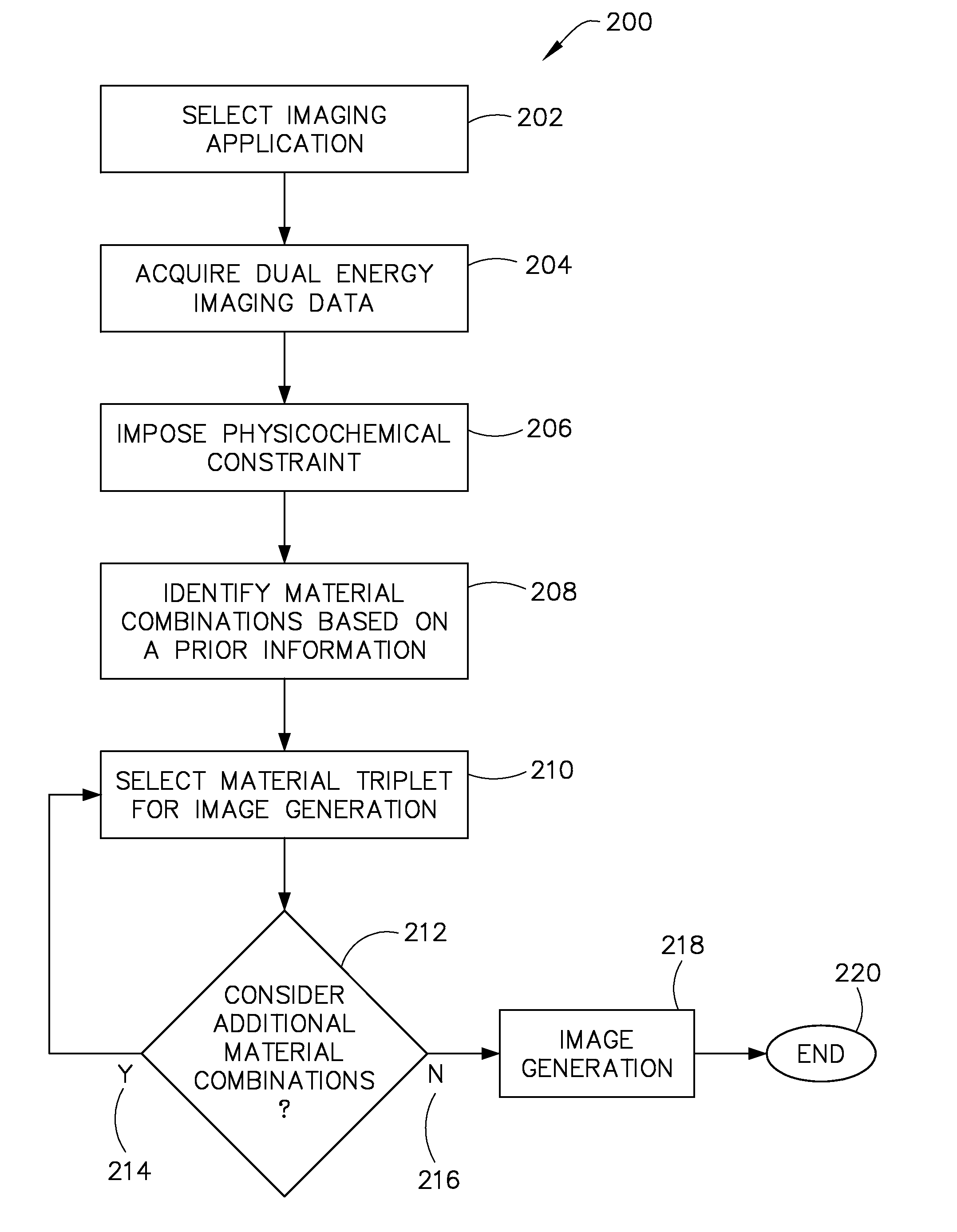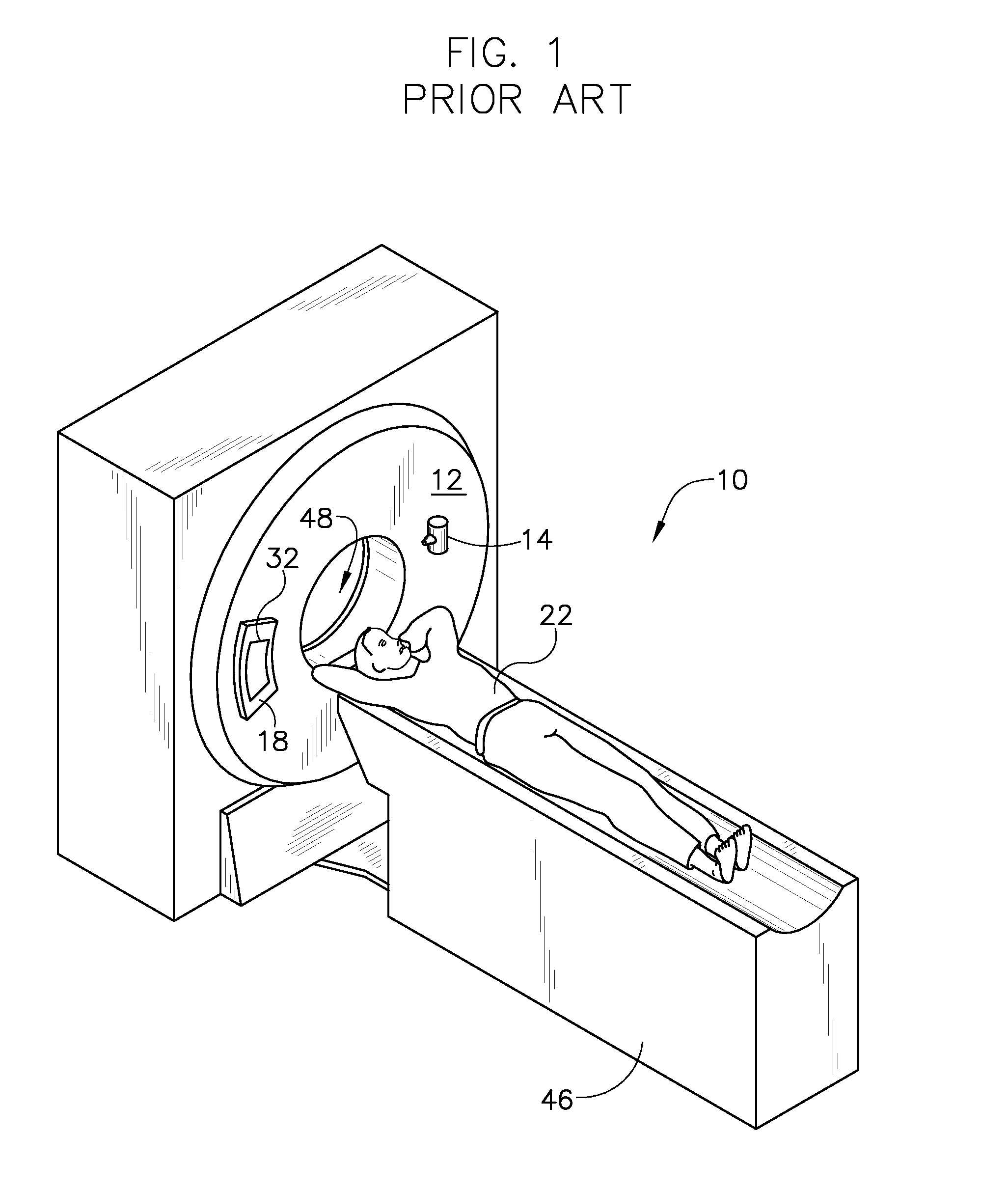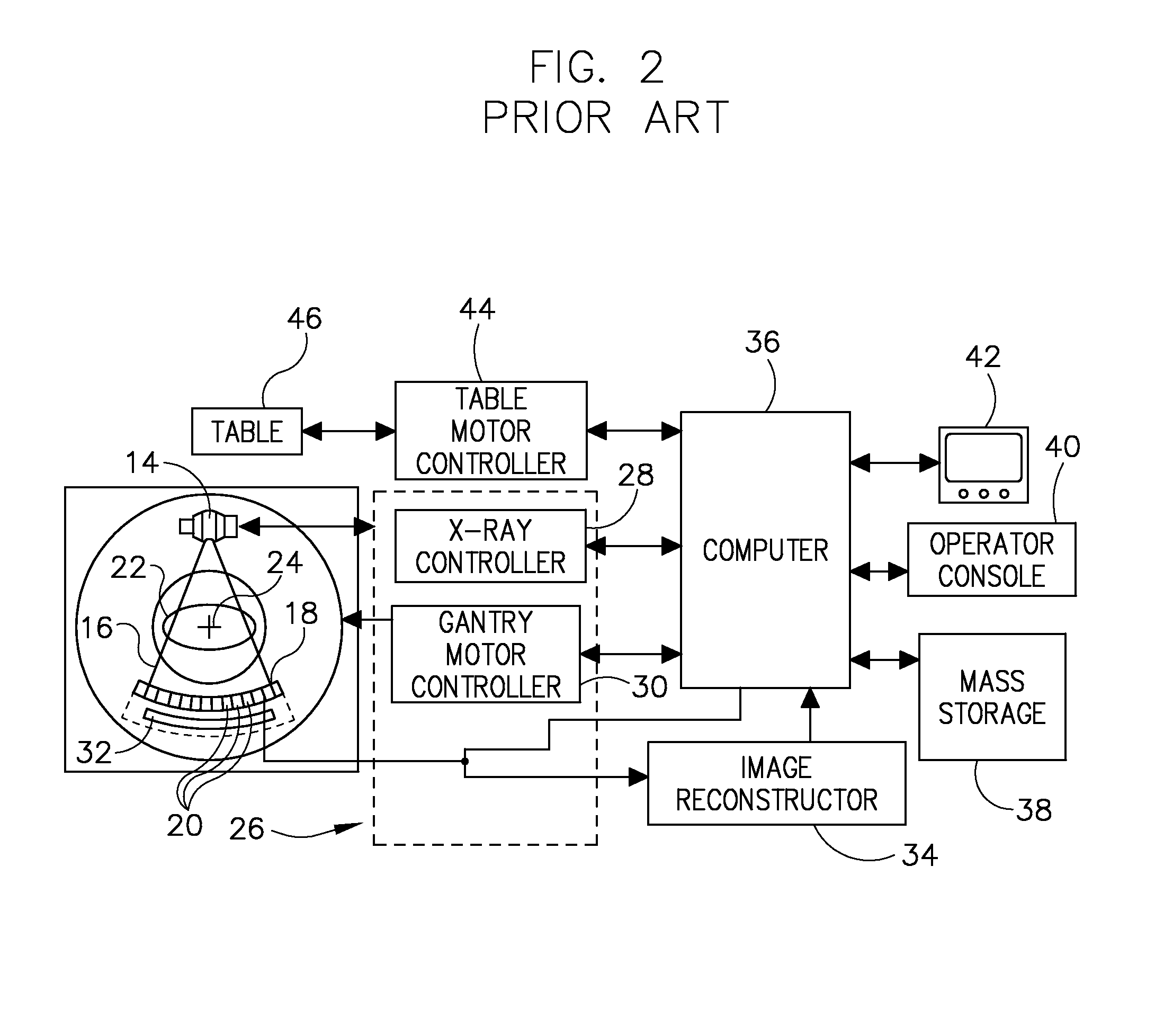Apparatus for and method of selecting material triplets for a multi-material decomposition
a multi-material decomposition and triplet technology, applied in the field of computed tomography (ct) imaging systems, can solve the problems of limiting the decomposition procedure to the specification of only two materials, unable to bring in a selection criteria, and otherwise discriminating the many possible solutions to find or suggest one or more leading candidate materials. the effect of the number of material combinations
- Summary
- Abstract
- Description
- Claims
- Application Information
AI Technical Summary
Benefits of technology
Problems solved by technology
Method used
Image
Examples
Embodiment Construction
[0034]As noted above, conventional dual-energy CT scanner processing does not evaluate the composition of ‘N≧3’ materials in a material component mix, and is thus generally limited to a decomposition in only two materials (i.e., N=2). In an exemplary aspect of the disclosed method, the capabilities of the dual-energy CT scanner are expanded from producing a material-decomposed image pair to producing a material-decomposed image triplet. The image triplet is obtained by assuming that the various mixtures of substances and tissue types found in the human body have physicochemical properties substantially equivalent to those of what is herein denoted as an ‘ideal material solution.’ This can also be done by using a model for the excess free energy of the mixture. Using this equivalence provides a model for the density of an imaged material mixture, where the model complements the image information provided by the conventional CT data. Under this model, the mass attenuation curve of a p...
PUM
| Property | Measurement | Unit |
|---|---|---|
| linear attenuation coefficient | aaaaa | aaaaa |
| density | aaaaa | aaaaa |
| linear attenuation coefficient | aaaaa | aaaaa |
Abstract
Description
Claims
Application Information
 Login to View More
Login to View More - R&D
- Intellectual Property
- Life Sciences
- Materials
- Tech Scout
- Unparalleled Data Quality
- Higher Quality Content
- 60% Fewer Hallucinations
Browse by: Latest US Patents, China's latest patents, Technical Efficacy Thesaurus, Application Domain, Technology Topic, Popular Technical Reports.
© 2025 PatSnap. All rights reserved.Legal|Privacy policy|Modern Slavery Act Transparency Statement|Sitemap|About US| Contact US: help@patsnap.com



